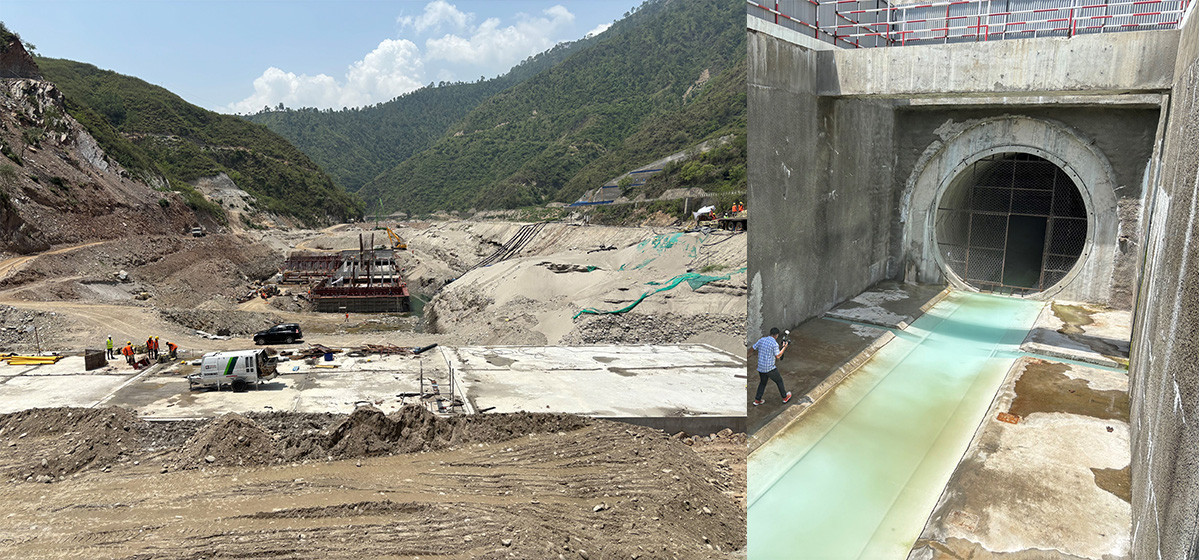Every country's economic development and progress are based on its infrastructure development. Many developed nations have used Public-Private Partnerships (PPPs) as a model for funding, planning, and completing large-scale infrastructure projects in recent decades. The PPP model effectively addresses infrastructure deficiencies by combining resources from the public and private sectors. Nevertheless, despite the potential advantages, PPPs have not been used extensively in Nepal, especially in the infrastructure sector.
In the modern world, public-private partnerships, or PPPs, have emerged as one of the most significant models for infrastructure development. PPPs have proven successful over time in boosting economic growth, increasing efficiency, and mobilizing resources, especially in industrialized nations. Despite its widespread success, developing nations like Nepal, where there are still large infrastructure shortages, have not formally accepted the model. This article will cover the concept and history of PPPs, their effective application in developed nations, and the reasons Nepal has not completely adopted this model.
Concepts of PPP
The term "public-private partnerships" (PPPs) describes cooperative arrangements between public and private sector organizations to fund, construct, operate, and manage infrastructure projects. The public sector offers long-term objectives, regulatory control, and public benefits, while the commercial sector contributes capital, efficiency, and technical know-how. These collaborations aim to capitalize on the strengths of both sectors.
Fundamentally, a public-private partnership is an agreement between a private sector organization and a public sector organization (like the government) to provide services or infrastructure that is typically delivered by the public sector. The core principle of PPPs is that, through cooperation, both sectors share the risks, obligations, and benefits of completing infrastructure projects or providing public services. Under such a model, the public sector ensures that the project complies with national development goals and regulations, while the private sector typically contributes capital, knowledge, and efficiency.
Large-scale infrastructure projects like roads, bridges, airports, hospitals, schools, and hydropower plants frequently utilize PPPs. While the government often provides funds, guarantees, or acquires the service from the private partner, the private sector is responsible for design, construction, operation, and sometimes financing. Although the lifespan of a PPP project can vary, it typically lasts between 10 and 30 years, during which payments are frequently provided to the private partner based on service delivery or performance. The modes of PPPs include BOOT (Build, Own, Operate, and Transfer), BOO (Build, Own, and Operate), DBFO (Design, Build, Finance, and Operate), DBFOM (Design, Build, Finance, Operate, and Manage), BTO (Build, Transfer, and Operate), DCFM (Design, Construct, Finance, and Manage), PFI (Private Finance Initiative), and O&M (Operate and Maintain).
Dr KC’s strike loses its relevance, says Minister Baskota

Major Advantages of PPPs
Public-Private Partnerships (PPPs) offer several major advantages. One key benefit is risk-sharing, where both the public and private sectors share responsibilities for operational inefficiencies, cost overruns, and construction delays. Additionally, PPP agreements are typically long-term, lasting 20 to 30 years, ensuring that private sector partners remain accountable for maintaining and operating the infrastructure after construction. Another advantage is the involvement of private sector funds and expertise, which brings specialized knowledge, efficient project delivery, and upfront financing, reducing the financial burden on the government.
History of PPPs
Although the PPP model was first developed in the early 20th century, it wasn't until the late 1980s and early 1990s that it became widely used. Infrastructure development was once mostly the responsibility of the government, particularly in wealthy countries. Governments began looking for alternatives due to the increasing demand for better infrastructure and constraints on public funds.
The privatization of state-owned businesses gained popularity in the 1980s worldwide, particularly in the UK under Prime Minister Margaret Thatcher. Without completely privatizing public services, this movement gradually developed into the PPP model, which gave the private sector considerable influence over infrastructure development. Early successes in the UK led to the proliferation of PPPs across Europe and beyond.
PPPs were widely adopted in the 1990s due to the global increase in infrastructure investment needs and the deregulation and privatization policies implemented in many nations. Countries such as the United States, Canada, and Australia adopted PPP models to finance, construct, and operate infrastructure projects. These collaborations enabled governments to enhance public infrastructure without placing an undue strain on national resources.
The growing understanding that infrastructure investments were necessary for sustained economic growth also contributed to the expansion of PPPs. In industrialized nations, where private sector involvement was essential for financing large-scale projects, particularly in light of growing public debt levels, PPPs helped address the significant financing needs for infrastructure.
Success Stories of Developed Countries Using the PPP Model
Numerous developed nations have successfully adopted the PPP model and benefited from enhanced public services and infrastructure. The UK’s Private Finance Initiative (PFI) launched in the early 1990s funded major infrastructure projects such as schools, hospitals, and transportation systems, reducing government spending while improving service delivery.
Australia has used PPPs since the early 1990s to build energy infrastructure, public transportation systems, and road networks. Australian state governments have extensively relied on PPPs to finance projects that would otherwise be too expensive for public finances. Key factors contributing to Australia’s success include a stable political climate, well-defined legal frameworks, and stringent accountability standards.
Canada has effectively used PPPs to build transit systems, bridges, and highways. Canada’s PPP model stands out due to its combination of federal, provincial, and private sector collaborations. The Canadian government ensures that its PPP projects adhere to best standards, emphasizing risk-sharing and long-term sustainability.
In the US, several states have used PPPs to finance transportation projects such as bridges and toll highways. California has been a leader in utilizing the PPP model for infrastructure projects, enabling the state to overcome financial limitations and expedite development. Projects like the Port of Miami Tunnel and the I-595 Express Lanes in Florida highlight the success of PPPs in the US.
India has also effectively used PPPs to upgrade its infrastructure, particularly in transportation. The National Highways Development Project (NHDP) and the Golden Quadrilateral, a network of highways connecting major cities, have significantly enhanced the country's transportation network.
How can Nepal Benefit from PPPs?
Due to financial limitations and ineffective public sector management, Nepal’s infrastructure development has lagged behind its regional counterparts. However, PPPs offer a viable solution to bridge this gap. To successfully implement Public-Private Partnerships (PPPs) in Nepal’s infrastructure sector, several key steps are necessary. First, Nepal must establish a clear legal and regulatory framework to govern PPP contracts, ensuring standardized dispute resolution, risk-sharing, and bidding processes. Strengthening public institutions like the Department of Roads and the Ministry of Finance is also crucial for effectively managing PPP projects. Additionally, the government should encourage private investment by offering incentives such as tax reductions, guarantees, and financial support systems. Finally, increasing public awareness through campaigns highlighting the benefits of PPPs in economic growth and infrastructure development will help gain broader support for this model.
Despite its infrastructure development needs, Nepal has yet to fully adopt the PPP model. Factors such as political instability, regulatory obstacles, limited institutional capacity, and a lack of experience in public-private cooperation hinder its implementation. However, with strategic reforms, Nepal can leverage PPPs to accelerate infrastructure development, attract international investment, and enhance economic growth. The PPPs have been effective in infrastructure development worldwide, helping governments overcome financial constraints, improve efficiency, and reduce corruption. Countries like the UK, Australia, Canada, and India have successfully implemented PPPs, and Nepal can benefit by adopting this model. By establishing a strong legal framework and fostering public-private collaboration, Nepal can address its infrastructure gaps, drive economic growth, and improve quality of life.





































